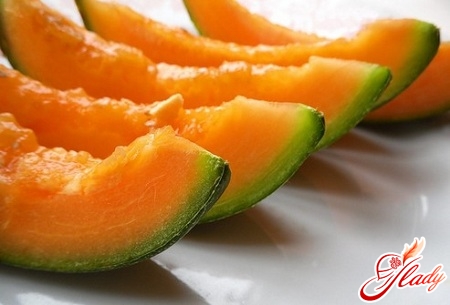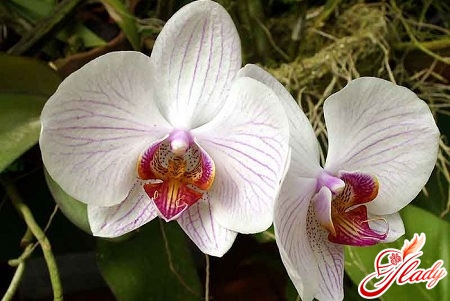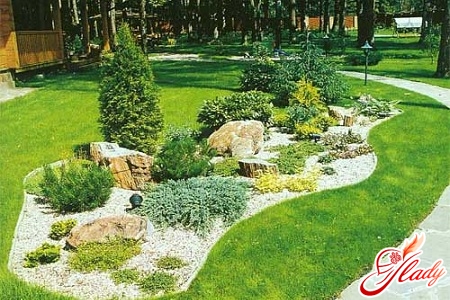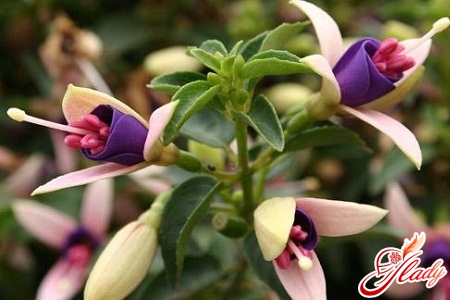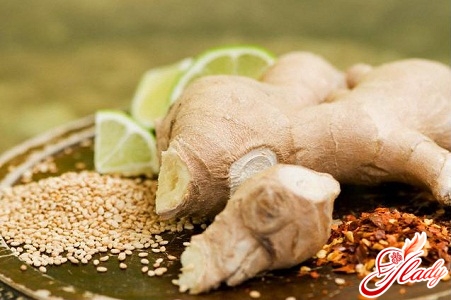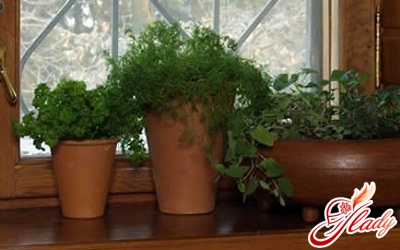 Almost all diseases of Kalanchoe appeardue to violation of the conditions of detention. It is worth noting that this plant likes diffused lighting and moderate watering. By providing it with the necessary care, you will achieve both proper development and flowering. But if the plant begins to get sick, its leaves are covered with spots, and you find small insects on the flowers and trunk, you need to take urgent measures. Let's try to rid the "green doctor" of problems together. In this article, we will tell you what pests can affect Kalanchoe and how to deal with them.
Almost all diseases of Kalanchoe appeardue to violation of the conditions of detention. It is worth noting that this plant likes diffused lighting and moderate watering. By providing it with the necessary care, you will achieve both proper development and flowering. But if the plant begins to get sick, its leaves are covered with spots, and you find small insects on the flowers and trunk, you need to take urgent measures. Let's try to rid the "green doctor" of problems together. In this article, we will tell you what pests can affect Kalanchoe and how to deal with them.
Aphids in Kalanchoe
Aphids are the most dangerous enemy of Kalanchoe.It appears mainly in spring. If you do not take urgent measures to get rid of them, the aphids can occupy neighboring plants, causing harm to all your flowers. If you find small green or black insects on the leaves and trunk of Kalanchoe, you should know that your plant is suffering from aphids. They take the juice from Kalanchoe and poison it with constant injections of their own poison. But that's not all - the affected leaves and stem are covered with a sticky substance that does not allow the flower to "breathe deeply". Most often, this insect can be found on young shoots or on inflorescences. Signs of aphid infestation Frequent use of nitrogen fertilizers stimulates the appearance of aphids. It has already been noted that aphids reproduce very quickly on overfed flowers. Aphids can get into the house on newly purchased plants or even on cut bouquets. Therefore, it is important to keep all newly arrived flowers in the so-called quarantine zone, in other words - in another room. At the initial stage of infection, it is quite difficult to notice any signs of aphid infestation. The insects themselves are quite small and, given that aphids settle on the back of the leaf, they are quite invisible. You can detect a colony as it grows - due to the clearly unhealthy appearance of the plant. It becomes dirty and deformed. The leaves begin to turn yellow and fall off, the buds no longer bloom, and the existing flowers fall off. The scary thing is that aphids carry more than 100 types of viruses, and their liquid sugary secretions become a nutrient medium for fungi. How to get rid of aphids? The most radical way is to cut off the affected areas and burn them. The remaining plant is treated with an appropriate insecticide for indoor plants. Repeat the treatment once a week for a month. Of the harmless preparations, green potassium soap can be recommended. It needs to be diluted in water (20 grams of soap per 1 liter) and the plant washed with this solution, having previously wrapped the soil in polyethylene. If it is difficult to get such a preparation, you can use laundry soap, it is also destructive to aphids, although to a lesser extent.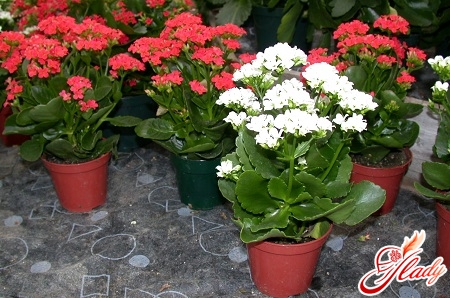
Shielding and Falsework
Scale insects belong to the suborder Coccidae andare insects with an elongated two-millimeter body, which is covered with a wax shield on top. Females are much larger than males and have neither wings nor legs. They sit motionless, covering the eggs. A plant affected by scale insects is covered with a peculiar coating of insect clusters. The leaves begin to turn yellow and fall off, the growth of Kalanchoe slows down, and flowering stops. The condition of the plant worsens due to additional damage by sooty fungus, which multiplies in the sticky secretion secreted by scale insects. The pests mainly stay on the underside of the leaves. Only young larvae are capable of movement, while adult individuals are motionless. To prevent this disease, the plant must be regularly and carefully inspected. And in late winter and early spring, make sure that the Kalanchoe is in a well-ventilated room. If the air temperature allows, spray the plant with water more often - scale insects do not like a humid environment. Methods of fighting scale insects Insects must be collected from the leaves, and then the flower must be washed with a soap solution. To make scale insects easier to remove, they are pre-treated with alcohol. There are no special insecticides for fighting scale insects, so you can use any preparation intended for indoor plants. You can fight pests with folk remedies - regularly (3-4 times a week) wipe the plant with a cotton swab soaked in vodka or diluted alcohol. Remove scale insects with an old toothbrush. You can also wash the plant with garlic infusion. Grind 5-6 cloves of garlic in a mortar and pour a glass of water. Infuse the resulting mixture in a dark place for several hours, filter it and spray the plant.
Why do leaves fall on the Kalanchoe?
All flower growers want Kalanchoe to always bepleased the eye with green leaves. But it happens that the stem of the plant stretches out, and the lower leaves begin to turn yellow and fall off. This behavior indicates improper lighting - it simply does not have enough sunlight. Sometimes this trouble occurs after flowering: growth stops, the flower begins to lose leaves. All this happens when the Kalanchoe is exhausted. It urgently needs a transplant or good feeding. The leaves also die off in the cold season. This happens due to the proximity to central heating. Most likely, the plant is on a windowsill near the battery, and the air around it is too dry. Move the flower to a room with a lower temperature. The optimal temperature at this time of year is about 13-15 degrees, then the Kalanchoe will overwinter without losing green mass. The main thing is that at a low temperature there is no excess moisture, otherwise you will have to treat the plant for mold, which appears as black or brown spots. In general, when caring for Kalanchoe, it is important to prune old shoots in time, then it will delight you for a long time with its beautiful shape and abundant flowering.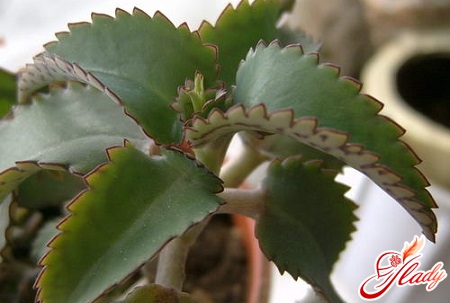
Other diseases of Kalanchoe
- Phytophotose rot
Signs of this disease are deadbrown spots in the places where Kalanchoe branches. Many factors provoke rot, such as excessive watering or poor ventilation. There may be too much fertilizer in the soil or too high a temperature. If this disease is detected, stop watering and provide the plant with a partial change of soil. In the future, Kalanchoe should be watered with fungicides for some time.
- Powdery mildew
Signs of the disease:Specific spots with a white coating of the fungus can be found on the leaves of the plant. Depending on the development of the disease, the leaves die. The danger is that the fungus that causes powdery mildew is easily transmitted through the air and can infect neighboring plants. The disease develops in conditions of dry air and high temperatures. Regular watering (but not frequent!) and spraying with fungicides are necessary to combat it.
- Gray rot
Accompanied by formation on the above-ground partsplants of wet gray spots. If no action is taken, the spots grow, turning into a mushy mass, and the plant dies. The fungus that causes the disease remains in the soil for another two years. Excess moisture, insufficient lighting and poor ventilation are necessary for its activation. If the disease is detected, it is necessary to urgently change the conditions of maintenance and ensure sufficient lighting and replacement of the soil. And also treat the plant with systemic fungicides. As you can see, all diseases inherent in Kalanchoe are curable. The main thing is to detect them in time and take appropriate measures.




